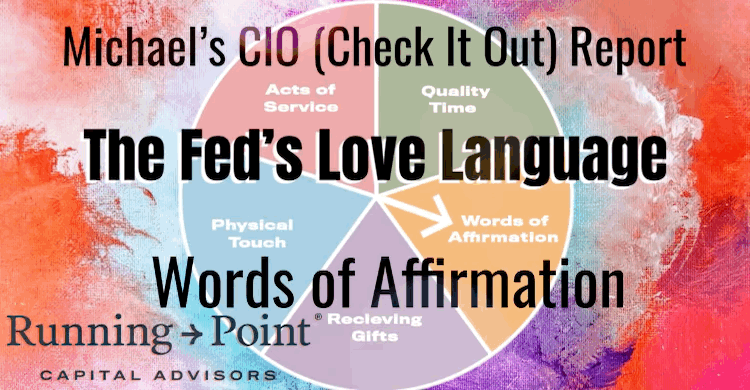Defensive and offensive government stimulus programs are absolutely and relatively gigantic
- To date, COVID-19 fiscal stimulus is more than twice the dollar amount of wages lost through pandemic unemployment
- Pandemic related monetary expansion of the Fed’s balance sheet will be equivalent to 1/3rd of U.S. GDP or 27% of the S&P 500’s market capitalization
As the economy reopens, business activity will return; the Fed may even provide loans to small businesses
Stocks and risky assets tend to do well after a crisis and are worth owning if you can look through the volatility
Many Southern Californians enjoyed a momentous weekend of hope after the local beaches re-opened; I, for one, in-line skated along the Strand, did a round trip pier to pier walk on the sand, received a beautiful aluminum mounted photograph that I won in a contest, started reading a novel, 1Q84, by Haruki Murakami, and even found a Trader Joe’s without an entry line! I suppose momentous is relative right now. Although in some ways momentous is always relative, like a baby’s first steps, that 3-point winning basketball shot, or the first day one opens doors for business. Momentous is also a worthy description of the tsunami of money the U.S. central bank and federal administration have used to combat the pandemic shutdown.
On the policy side, the magnitude of the US fiscal response to the COVID crisis is enormous. Between the Families First Act, the Coronavirus Aid, Relief, and Economic Security (CARES) Act, and the Paycheck Protection Program and Health Care Enhancement Act (PPP & HCE Act), over $2 trillion of stimulus will funnel into main street over a six month period; that is roughly $11 billion a day, or approximately $85 per household per day of stimulus versus an estimated $40 per household per day of wage losses from pandemic related unemployment. Of course, household wage losses tend to be more binary than the average numbers describe based on whether a family member has or has not lost their job. However, these figures do not include all the state unemployment benefits that also provide a safety net. Altogether, the sheer size of the fiscal stimulus is gigantic – more than twice the amount of wages lost – and is mostly aimed at keeping people and businesses employed or afloat.
As mentioned in our March 31, 2020 note, there are two types of government fiscal stimulus; defensive and offensive. During this COVID-19 crisis, government stimulus has mostly been defensive, a life buoy aimed at keeping consumers and businesses out of bankruptcy through grants, forbearance, extensions of credit, and measures to keep the financial system solvent. Now that we are slowly passing the shutdown phase, and beginning to reopen services and businesses, government stimulus can turn offensive – in order to spark a near-term recovery – with direct government spending and business and consumer incentives. The strategy will be to massively stimulate domestic demand and ramp up the service and manufacturing sectors in order to return to full employment. Interestingly, business productivity might measurably improve out of sheer necessity to do more with less. A lot of the recovery comes down to game theory; it is a confidence game, and confidence is the cheapest form of stimulus. People and businesses must feel comfortable that they can pick up and resume their lives; if enough do it, we all win.
In terms of defensive stimulus, the Federal Reserve, has played a pivotal role by massively expanding its balance sheet to purchase U.S. debt issued by the Treasury, maintain the flow of capital, and help incentivize credit and lending. In the crisis’s first two months, the Fed’s balance sheet grew by $2.5 trillion, and is expected to expand by an additional $4.5 trillion by yearend, an astounding $7 trillion increase, a projected pace of nearly $26 billion every day from April to December. By comparison, during the great financial crisis, the Fed balance sheet grew at $3 billion per day. For further perspective, Fed purchases through year-end will equate to 1) 20% of the Bloomberg Barclays US Aggregate Bond Index (Agg), taking their balance to roughly 45% the size of the Agg, 2) Approximately 1/3rd of US GDP, or 3) More than 27% of the S&P 500 market capitalization. It is a staggering amount! Thus, as the year progresses, the Fed’s defensive monetary stimulus will automatically turn into offensive stimulus as it continues to operate through the reopening of the economy.
In terms of additional offensive stimulus, the Fed may begin to lend aggressively to small firms with limited access to bank credit. This would help small firms finance loans at reasonable rates and increase the Fed’s loan book in coordination with the U.S. Treasury. The loans could be booked under the existing Federal Reserve Act as Treasury funded emergency lending that can be leveraged ten-to-one; in other words, for every $100 million of Treasury capital, the Fed could lend out $1 billion. Just as the Fed has become the buyer of last resort when there is stress in the financial markets, it may also soon become the lender of last resort.
Over the last few months, we’ve watched asset prices swing from pandemic fear to stimulus cheer. When the reopening of the economy or a cure seems close, asset prices [1] $7 trillion of stimulus divided by an S&P market cap of approximately $25.6 trillion as of May 21, 2020 = 27.3% rally (the riskier, the better); but on more doubtful days when large bankruptcies are announced, consumption looks lackluster, capital expenditures seem dormant, or the “normal” horizon seems even further away, safer sounding assets come into play. We swing between disparate forces that influence prices up and down the capital stack, from equity to debt. Additionally, many investors tend to be procyclical (meaning they buy in market rallies and sell in market declines) which adds to volatility by making daily price moves more extreme. Nonetheless, for all their daily, monthly, and quarterly volatility, stocks are still worth owning for their long-term return potential and their tendency to do well when emerging from a crisis. We need to look through all the noise; the bottom line is that from here, a virtual standstill for many – even though some companies won’t survive – business activity will revive. The government should muster its offensive stimulus and the overall economy will improve; the questions are when and to what level, and will we have a vaccine?
“For further perspective, Fed purchases through year-end will equate to 1) 20% of the Bloomberg Barclays US Aggregate Bond Index (Agg), taking their balance to roughly 45% the size of the Agg, 2) Approximately 1/3rd of US GDP, or 3) More than 27% of the S&P 500 market capitalization.”
Michael Ashley Schulman, CFA
Partner, Chief Investment Officer
Disclosure: The opinions expressed herein are those of Running Point Capital Advisors, LLC (“Running Point”) and are subject to change without notice. Running Point reserves the right to modify its current investment strategies and techniques based on changing market dynamics or client needs. This should not be considered investment advice or an offer to sell any product. Running Point is an independent investment adviser registered under the Investment Advisers Act of 1940, as amended. Registration does not imply a certain level of skill or training. More information about Running Point, including our investment strategies, fees and objectives can be found in our ADV Part 2, which is available upon request. RP-20-15


